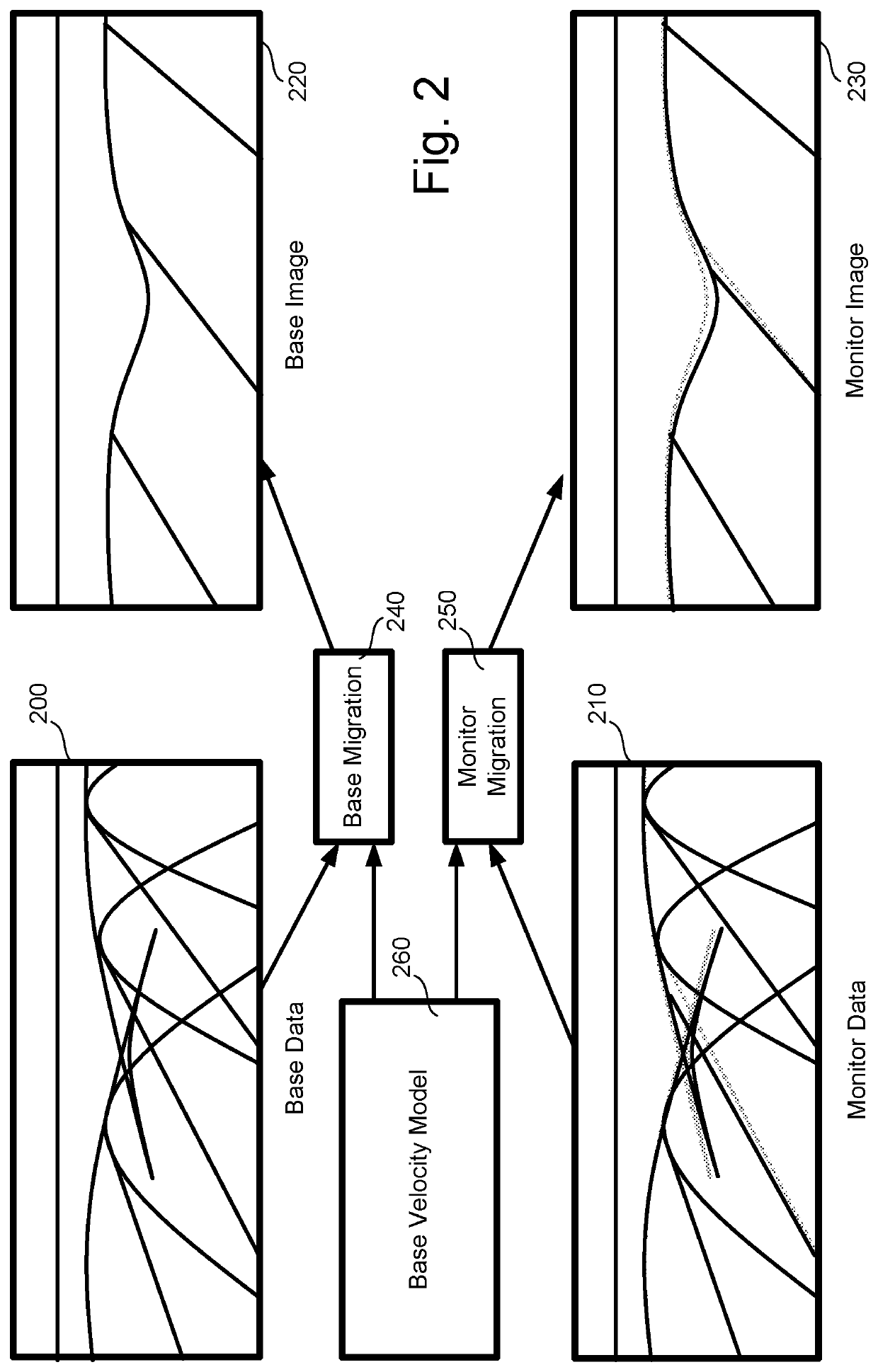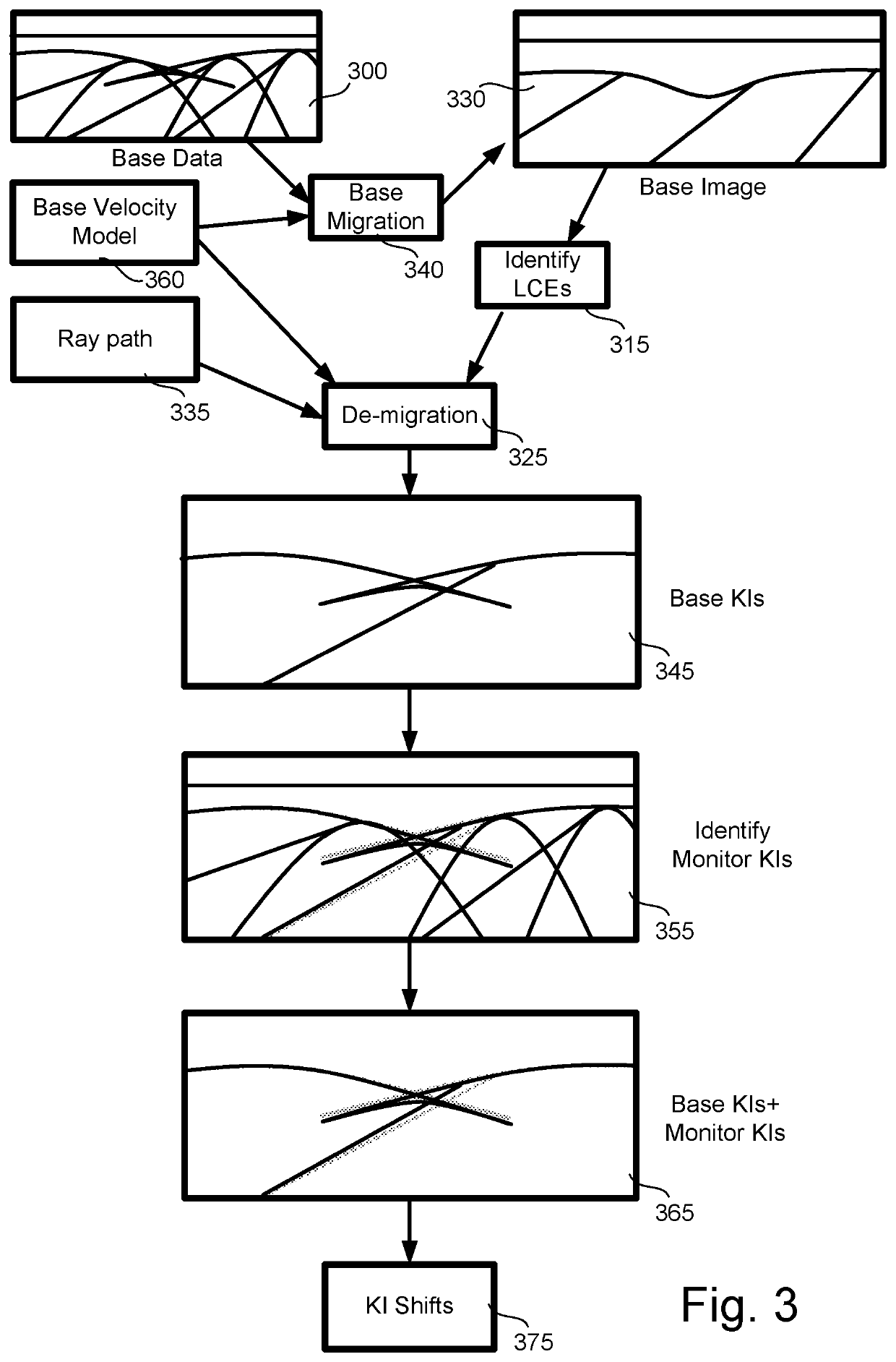Method for obtaining estimates of a model parameter so as to characterise the evolution of a subsurface volume over a time period using time-lapse seismic
a time-lapse seismic and model parameter technology, applied in the field of geosciences, can solve problems such as inversion becoming even more non-linear, altering local wavefield, and affecting seismic performan
- Summary
- Abstract
- Description
- Claims
- Application Information
AI Technical Summary
Problems solved by technology
Method used
Image
Examples
Embodiment Construction
[0028]Referring initially to FIGS. 1(a) and 1(b) there is illustrated a subsurface volume 10 comprising a reservoir containing hydrocarbons 12. A survey vessel 16 may comprise a transmitter 18, such as an acoustic transmitter, and an array of receivers 20. The survey vessel may perform a survey by travelling over the subsurface volume 10, transmitting seismic signals into the subsurface volume and subsequently receiving some or all of said seismic signals (the received seismic signals) after reflection of said seismic signal off reflectors 14 within the subsurface volume. A reflector 14 may comprise an interface between layers of contrasting acoustic, optical or electromagnetic properties. The first survey or initial survey, FIG. 1(a), may be referred to as a base survey and is typically performed in the exploration phase before production begins.
[0029]The base survey of the subsurface volume 10 provides first seismic data at a first time T, comprising a set of seismic traces. For a...
PUM
 Login to view more
Login to view more Abstract
Description
Claims
Application Information
 Login to view more
Login to view more - R&D Engineer
- R&D Manager
- IP Professional
- Industry Leading Data Capabilities
- Powerful AI technology
- Patent DNA Extraction
Browse by: Latest US Patents, China's latest patents, Technical Efficacy Thesaurus, Application Domain, Technology Topic.
© 2024 PatSnap. All rights reserved.Legal|Privacy policy|Modern Slavery Act Transparency Statement|Sitemap



